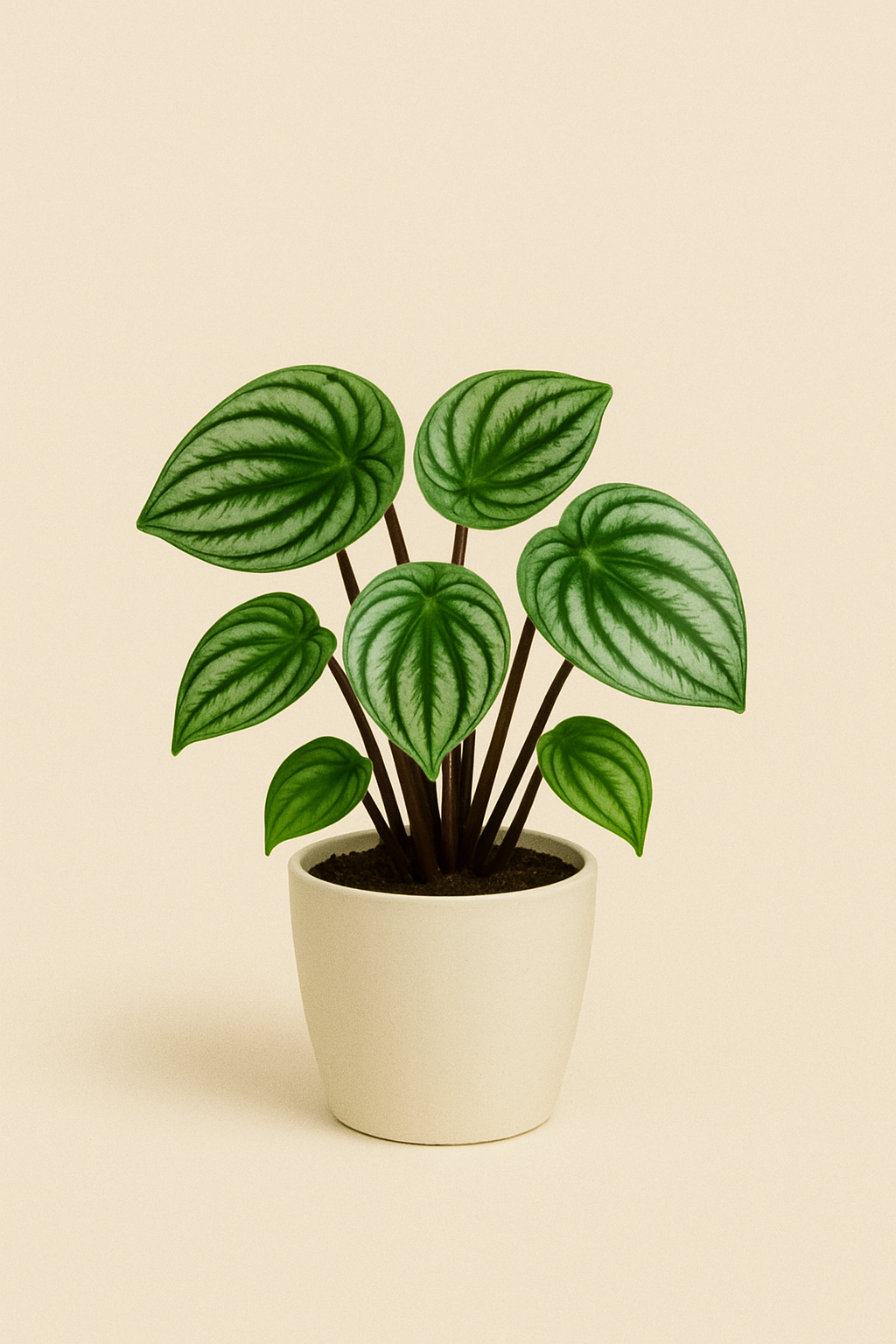Watermelon Peperomia

Scientific name: Peperomia argyreia
☘️ Toxicity: Safe for cats
☀️ Ideal light: Bright indirect light
💧 Watering: Moderate; water when the top layer of soil is almost dry
The Watermelon Peperomia is a compact and charming houseplant, recognized for its round, silver-striped leaves that resemble the skin of a watermelon. It thrives in bright indoor spaces and requires little maintenance — ideal for desks, shelves, and small tables.
Essential care
- Light: Prefers bright, indirect light. Avoid direct sunlight which can scorch its delicate leaves.
- Water: Water moderately, keeping the substrate lightly moist but never waterlogged.
- Substrate: Light and well-draining mix rich in organic matter (peat + perlite + pine bark works well).
- Humidity: Enjoys moderate to high humidity; occasional misting is beneficial.
- Temperature: Prefers 18–26 °C (64–79 °F); sensitive to cold drafts and sudden temperature drops.
Common problems
- Soft leaves: Usually a sign of overwatering and root rot.
- Brown tips: Caused by dry air or direct sunlight.
- Slow growth: Often due to low light or compacted soil.
Propagation
- Leaf cuttings: Cut a leaf with its petiole and place it in moist, light substrate until roots develop.
- Stem cuttings: Can also be propagated by rooting stem sections in water or soil.
Cat safety
- Classification: Non-toxic to cats.
- Best practice: Even though it’s safe, keep it out of reach to avoid leaf damage from curious paws.
💡 The name “Watermelon Peperomia” comes from its silver-striped foliage that resembles the fruit’s rind — a symbol of balance and simplicity in small spaces.
Quick checklist
- ☀️ Bright indirect light
- 💧 Moderate watering
- 🪴 Light, well-draining substrate
- 🌫️ Moderate humidity
- 🐾 Safe for cats